9 Home Remedies For Dry Socket And Prevention Tips
This painful condition needs your immediate attention and effective at-home care.
Image: Shutterstock
At first glance, a dry socket can seem like a toothache. It is, however, impossible not to look up how to get fast relief from a dry socket as this painful condition can become too severe. Medical treatment can be ineffective in cases where patients experience excruciating pain, and infected gums can cause further inflammation. You can identify that you have a dry socket if the pain persists and if you notice a foul breath.
About 0.5–5.6% of patients have dry sockets. The statistic rises to 30% following the surgical removal of a third molar (1).
It might sound alarming, but don’t worry. In this article, we explained the causes and home remedies for dry socket pain and how to prevent it. Keep reading.
In This Article
What Is Dry Socket?
You may have visited a dentist for a tooth extraction procedure. Sometimes, the extraction procedure can end up exposing a part of or the entire bone within the socket. It can remain exposed for a long time without being covered by a layer of epitheliumi Layer of cells that cover all outer body surfaces and line all hollow organs and body cavities. or blood clot. This can cause acute pain. This is known as dry socket or alveolar osteitis. It is observed mainly in the case of molar extraction (2).
Researchers are still not clear as to what causes dry socket or alveolar osteitis. Some of the causes may be as follows.
Key Takeaways
- A dry socket mainly occurs when the bone stands exposed after a tooth extraction procedure. This can cause bacterial contamination.
- Foul smell and pain from your socket to the ear and up to the temple are symptoms of this condition.
- Smoking and taking oral contraceptives after this procedure increase the risk of dry sockets as they impact wound healing.
- While your doctor may prescribe mouthwashes and antibiotics, you can also try some home remedies like rinsing your mouth with warm saltwater.
What Causes Dry Socket?
The possible causes of dry socket include:
- Bacterial Contamination: Sometimes, after the extraction of a tooth, the blood clot does not form effectively or is disintegrated. This part of the socket is then open to bacterial contamination, thereby aggravating the condition (3).
- Trauma At The Surgical Site: When the location of the extraction experiences trauma, especially from a problematic extraction, it increases the likelihood of developing alveolar osteitis.
- Premature Dislodgement Of The Blood Clot: After the extraction, a blood clot forms at the base of the tooth. Before this can heal and get filled up, if the clot gets dislodged, dry socket can set in, causing acute pain.
At this stage, you are probably curious to know what puts you at the risk of getting dry socket. Read on to find out.
Risk Factors For Dry Socket
- Improper Follow-Up Of Post-Surgery Guidelines: After tooth extraction, if you do not follow the instructions diligently, you stand at the risk of developing dry socket.
- History Of Dry Socket: A history of dry socket can increase the risk of developing it in the future.
- Tooth Or Gum Infection: An infection of the tooth or the gum around the site of extraction can make you susceptible to dry sockets. If you experience pain, it’s important to be proactive and consider home remedies for gum pain and infection to prevent the potential complication.
- Smoking: The major component of cigarettes is tobacco, which can hinder the healing of the wound.
- Oral Contraceptives: Oral contraceptives contain high levels of estrogeni Sex hormones responsible for sexual and reproductive development and health in women’s bodies. . This may end up disrupting the normal healing process and increase susceptibility to dry socket.
Wendy, a blogger, who had a dry socket after a tooth extraction shares her frustration about the aftercare on her blog: “This is what I (still) have to do. I eat some food (soft like soup or mashed potatoes) so I can take the medication, but the food irritates my tooth and jaw, so if I didn’t need medication before I certainly need it now. After I eat anything I have to rinse with water, brush my teeth, and then rinse with mouthwash. Then I have to shove a clove oil-soaked tiny cotton ball into the toothless socket. After all this, I lie on the couch with an ice pack until everything kicks in (i).”
How do you know if you have dry socket? Find out below.
What Are The Symptoms Of Dry Socket?
The symptoms include:
- Acute pain from the socket to your ear up to your temple after the extraction procedure.
- Premature dislodgement of the blood clot at the site of surgery.
- You may be able to see the bone where the tooth was removed.
- Foul breath
If you suspect that you have dry socket, it is better to visit your dentist and get yourself diagnosed.
How Is Dry Socket Diagnosed?
If you complain of severe pain right after a tooth extraction, the dentist will invariably suspect dry socket.
They will examine your mouth for an exposed bone as a result of dislodgement of the blood clot. They may also ask for X-ray scans of your jaw to rule out further complications.
How Do Dentists Treat Dry Socket?
Your dentist will prescribe medication, including painkillers. They may suggest the following:
- Before and after the surgical procedure, you may have to take antibacterial gels or mouthwashes.
- They may prescribe antibiotics to prevent infection.
- Dressing is applied to the wound.
Your dentist will first try to flush the exposed socket to remove the debris. The cavity is dressed with a medicated dressing after applying anesthetic to the site.
In addition to following your dentist’s advice and treatment, you can also use the home remedies listed below to manage the symptoms of dry socket.
9 Home Remedies For Dry Socket
1. Warm Salt Water
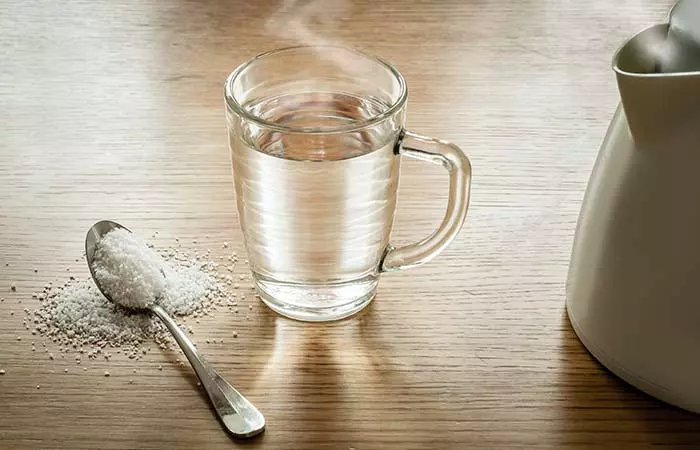
The iodatesi A class of iodine-containing chemical compounds that is colorless. in common salt exhibit antimicrobial properties (4). This can help in eliminating oral contamination by bacteria, thereby reducing the risk of a dry socket setting in.
You Will Need
- 1 glass of warm water
- 2 teaspoons of salt
What You Have To Do
- Heat a glass (250 mL) of water.
- Add two teaspoons of salt to it.
- Rinse your mouth thoroughly with saline water.
How Often You Should Do This
Repeat 2-3 times daily.
2. Cold And Warm Compress

After dental surgery, patients experience swelling and pain in the jaw. Using a cold pack helps reduce inflammation and pain after surgery (5). You may also use a hot pack near the affected site to reduce pain.
You Will Need
- A hot/ice compress
- A bowl of water
What You Have To Do
- Place an ice pack on the affected area for 15 minutes.
- You may also use a sterile washcloth dipped in warm water. Place the washcloth near your jaw for 10-15 minutes.
- You can also use alternate compress in the ratio of 1:3 (warm:cold) for 10-15 minutes. This will provide immediate relief.
How Often You Should Do This
Repeat as needed until the pain subsides.
3. Clove Oil
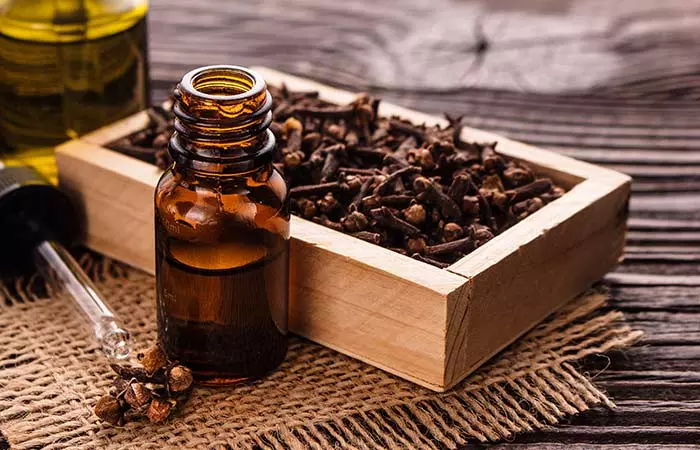
Clove oil for toothache is a known remedy. However, using clove oil is a good solution and it applies here as well. The eugenoli Also known as clove oil, it is a fragrant oil extracted from cloves used to add flavor to food and drinks and as a herbal aid. in clove oil exhibits antimicrobial and analgesici A drug administered to relieve pain from headaches or inflammatory issues like arthritis. properties (6). These properties can help reduce pain and fight infection arising from dry socket.
You Will Need
- A sterile cotton ball
- 2-3 drops of clove oil
What You Have To Do
- Take a clean cotton ball and dab a few drops of clove oil on it.
- Place the cotton ball close to the site of extraction for about 15-20 minutes. Ensure that other areas that are not painful do not come in contact with clove oil, as it may create a slight burning sensation.
- Alternatively, you can use whole dried cloves. Chew on a clove slowly, releasing the oil around the affected area. Chew on it for about 30 minutes before rinsing your mouth.
How Often You Should Do This
Repeat 2 times daily until the pain reduces.
4. Black Tea Bags
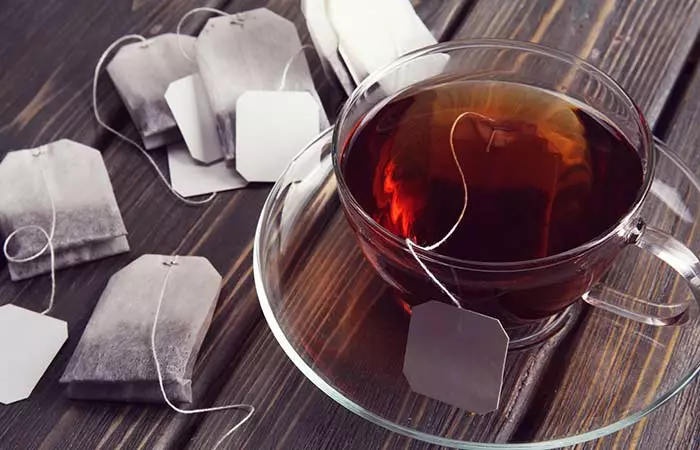
Black tea contains tannins. Research shows that tannins possess antimicrobial properties that may prove to be helpful in fighting oral infections (7). Hence, black tea may help reduce infection around the dry socket and aid pain relief.
You Will Need
- A black tea bag
- 100 mL of boiling water
What You Have To Do
- Boil 100 mL of water and dip a black tea bag in it.
- Let it steep for 15 minutes before taking it out.
- Cool the tea bag completely and bite on it gently for about 15 minutes.
- Rinse your mouth with the cooled down tea.
How Often You Should Do This
Repeat once daily.
 Quick Tip
Quick Tip5. Honey
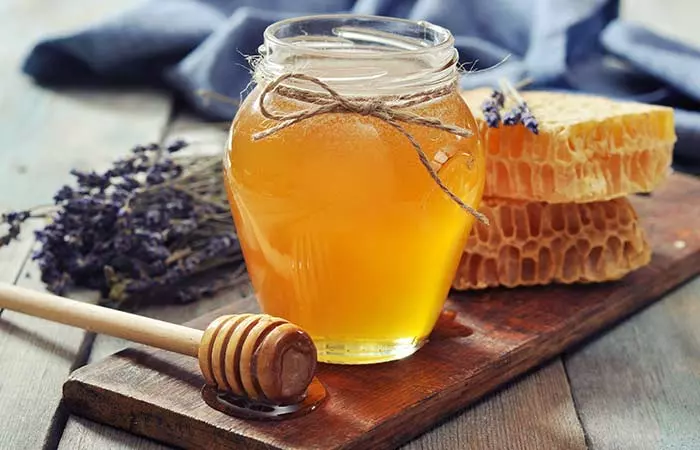
According to a study published in the National Journal of Maxillofacial Surgery, honey can help in managing the edemai A medical condition in which swelling or puffiness is caused by excess fluid in body tissues. , inflammation, pain, and discomfort (8). It can also help prevent infection in the affected area.
You Will Need
- A sterile cotton ball or gauze
- 1 tablespoon of honey
What You Have To Do
- Take a sterile cotton ball and dab one tablespoon of honey on it.
- Place this on the affected site.
How Often You Should Do This
Repeat 3-4 times daily. Don’t forget to change the cotton ball every time.
6. Aloe Vera
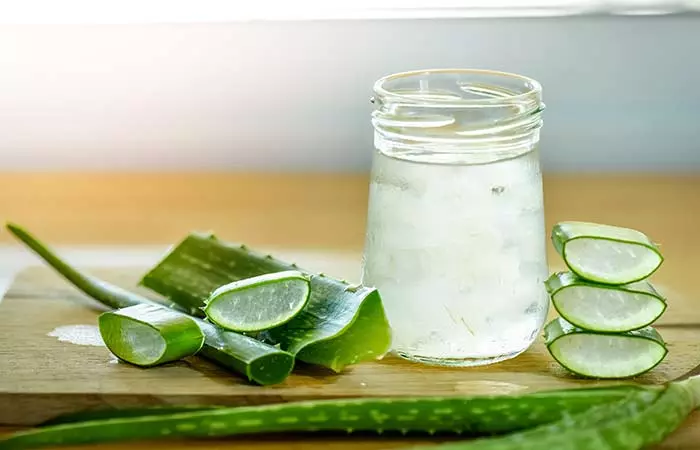
A study published in the Journal of Oral and Maxillofacial Surgery shows that a patch containing aloe vera gel can significantly reduce the incidence of alveolar osteitis (9).
You Will Need
1 teaspoon of aloe vera gel
What You Have To Do
- Apply aloe vera gel to the affected area with a cotton ball.
- Massage gently for 5 minutes.
- Rinse your mouth thoroughly with water.
How Often You Should Do This
Repeat 2 times daily.
7. Essential Oils
(a) Oregano Oil
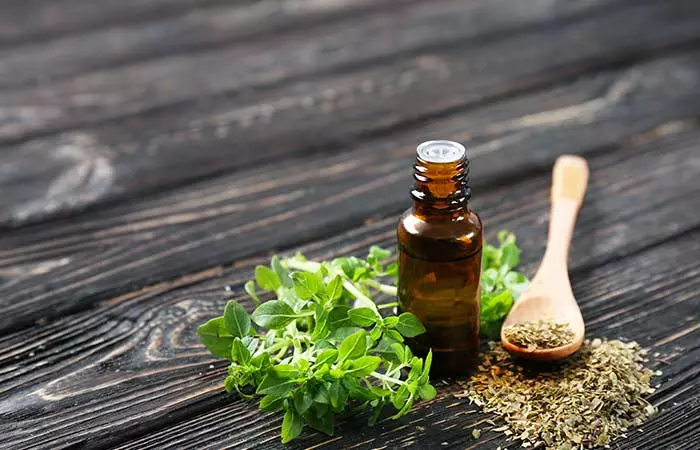
Oregano oil possesses antibacterial properties (10). This can help in fighting the infection that is caused when dry socket sets in and improves oral health.
You Will Need
- A sterile cotton ball or gauze
- 2-3 drops of oregano oil
What You Have To Do
- Take a sterile cotton ball and dab two to three drops of oregano oil on it.
- Place this on the infected site.
How Often You Should Do This
Repeat 3-4 times daily. Ensure that you use a new cotton ball with every use.
(b) Tea Tree Oil
Tea tree oil has anti-inflammatory and antiseptic properties (11). It can be used as a topical formulation at the site of the dry socket to help reduce swelling and infection.
You Will Need
- A sterile cotton ball or gauze
- 2-3 drops of tea tree oil
What You Have To Do
- Take a sterile cotton ball and dab two to three drops of tea tree oil on it.
- Place this on the site of swelling and infection.
How Often You Should Do This
Repeat 3-4 times daily until the swelling reduces. Change the cotton ball every time.
8. Chamomile Tea

Chamomile has been widely used for its antibacterial and anti-inflammatory properties since ancient times (12). These properties can help reduce inflammation at the site of the dry socket and also fight bacterial activity in the oral cavity.
You Will Need
- A chamomile tea bag
- 100 mL of boiling water
What You Have To Do
- Boil 100 mL of water and dip a chamomile tea bag in it.
- Let it steep for 15 minutes before taking it out.
- Cool the tea bag completely and gently bite on it for about 15 minutes.
- If your jaw hurts too much, you can rinse your mouth with the cooled down chamomile tea.
How Often You Should Do This
Repeat once daily until the inflammation reduces.
 Quick Tip
Quick Tip9. Turmeric
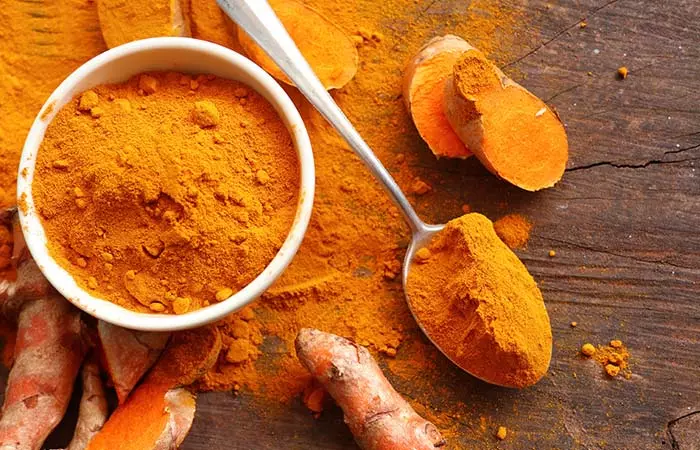
Turmeric contains curcumin, which has anti-inflammatory and antimicrobial properties. It can help reduce pain, inflammation, and discomfort associated with dry socket (13).
You Will Need
- 1 teaspoon turmeric powder
- A few drops of carrier oil
What You Have To Do
- Take a teaspoon of turmeric powder and make a thick paste by adding a few drops of carrier oil like mustard oil to it.
- Apply this paste generously on the site of the infection.
How Often You Should Do This
Repeat this procedure 2 times daily.
These were a few easy-to-do home remedies to help take care of the dry socket from the comfort of your home. If you follow them diligently, you will find relief from the pain and soreness in your gums. Additionally, anecdotal evidence suggests that adding a salt water rinse to your dental care routine and using a tea bag compress may help reduce pain associated with dry sockets.
Recovery Timeline
The recovery time for dry socket can vary depending on individual factors and the severity of the condition.
On average, it takes about 7 to 10 days for the pain to subside. However, complete healing may take several weeks. Factors that can influence the healing process include the size of the blood clot, overall oral health, and adherence to post-operative care instructions.
Here are a few ways in which you can prevent dry socket.
How Can I Prevent Dry Socket?
- Right after the procedure, make sure not to throw away the medicated gauze as it may lead to blood clot dislodgement.
- Maintaining oral hygiene is very important after tooth extraction.
- Consume only liquids and fluid foods for a few days after extraction.
- Use medicated mouthwash to avoid bacterial contamination.
- Gently massage the site of tooth extraction with clove oil on a sterile cotton ball. This will help prevent further infection.
- Using tobacco products like cigarettes can hinder the healing process after the extraction of a molar (14). The action of drawing a puff of smoke can also lead to dislodgement of the blood clot after the extraction. Hence, avoid smoking.
Infographic: Oral Hygiene: Dos And Don’ts
A proper dental hygiene routine is essential for maintaining oral health. In essence, it is a practice for effectively cleaning your teeth and gums. In the infographic below, we have listed the basic dos and don’ts of oral hygiene that ensure your teeth receive the proper attention and care they need. Check it out for more information!
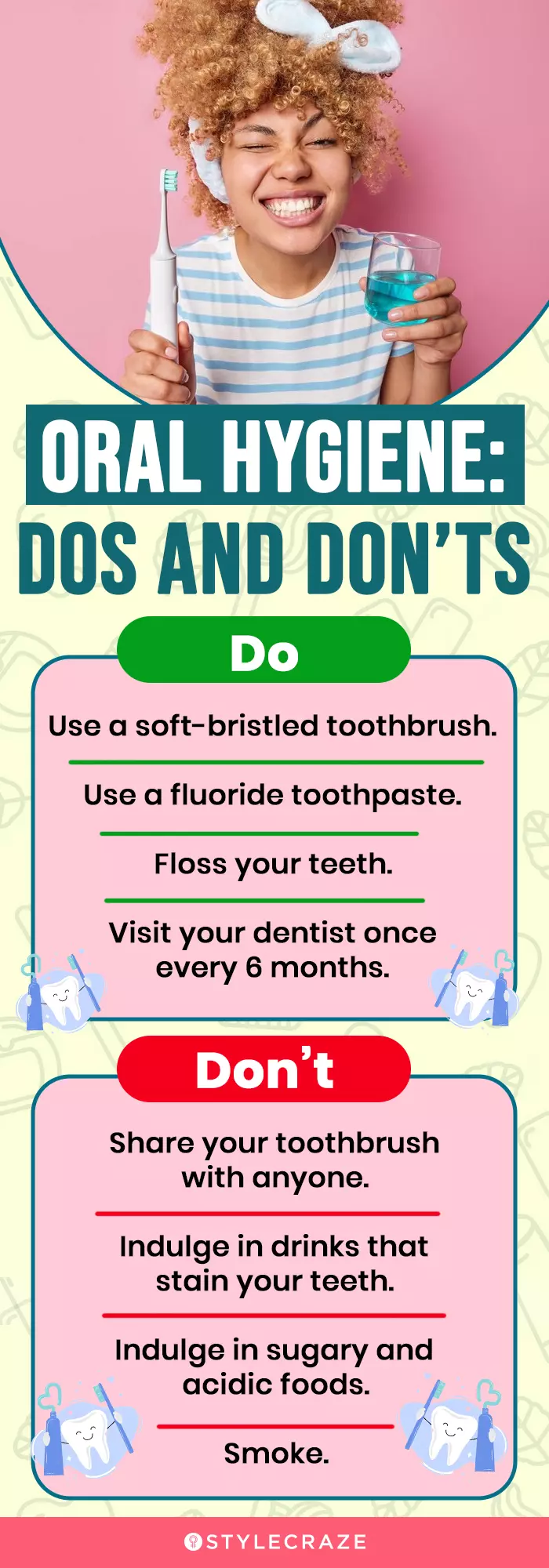
Illustration: StyleCraze Design Team
A dry socket is a painful condition that occurs when the bone within the socket is exposed. This can happen due to a poor aftercare routine following a tooth extraction or an infection. The blood clot formed after the tooth extraction gets dislodged before it can fully heal, resulting in this excruciating pain. However, you can try these simple home remedies to get relief from dry sockets. These natural remedies are effective as they have antimicrobial, analgesic, or anti-inflammatory properties. Maintain good oral hygiene and use medicated mouthwash to keep this condition from recurring. Seek medical intervention along with these remedies to deal with dry sockets effectively.
Frequently Asked Questions
What can I buy over the counter for a dry socket?
Advil (NSAID) and Tylenol (analgesic) are common over-the-counter oral medications for treating a dry socket.
Can I put Orajel in a dry socket?
Yes, orajel is a pain-relieving gel that can be used for relieving dry socket pain. However, it is recommended that you use it under a dentist’s guidance.
How long does dry socket last untreated?
Dry socket may last up to a week if left untreated. However, as it causes moderate to severe pain, most individuals with a dry socket opt to get medical attention. In addition, an untreated dry socket may cause complications such as injections or delayed healing.
Illustration: Home Remedies For Dry Socket And Prevention Tips
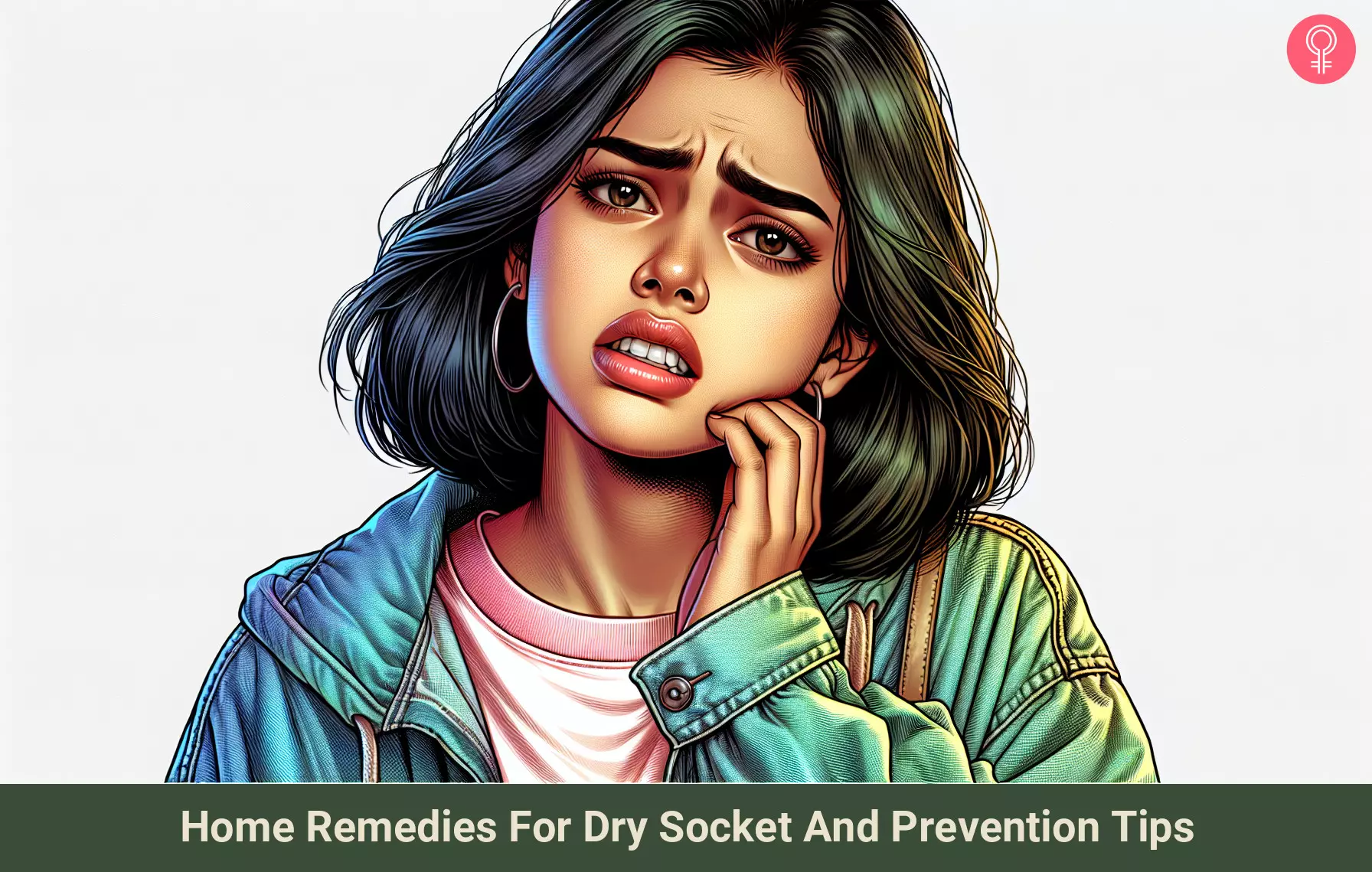
Image: Dall·E/StyleCraze Design Team
Learn about the troubling condition of dry sockets after tooth extraction. Check out this video to explore its symptoms, causes, and effective treatments for a speedy recovery. Get the knowledge you need for optimal oral health.
Personal Experience: Source
StyleCraze's articles are interwoven with authentic personal narratives that provide depth and resonance to our content. Below are the sources of the personal accounts referenced in this article.
i. Lesson 411 – The pain of lifehttps://simplethrift.wordpress.com/2011/10/03/lesson-411-the-pain-of-life/#more-3933
References
Articles on StyleCraze are backed by verified information from peer-reviewed and academic research papers, reputed organizations, research institutions, and medical associations to ensure accuracy and relevance. Read our editorial policy to learn more.
- Dry Socket: Incidence, Clinical Features, and Predisposing Factors. International Journal of Dentistry, US National Library of Medicine, National Institutes of Health.
https://www.ncbi.nlm.nih.gov/pmc/articles/PMC4060391/ - Dry Socket Etiology, Diagnosis, and Clinical Treatment Techniques, KAOMS, US National Library of Medicine, National Institutes of Health.
https://www.ncbi.nlm.nih.gov/pmc/articles/PMC5932271/ - Alveolar Osteitis: A Comprehensive Review of Concepts and Controversies. International Journal of Dentistry, US National Library of Medicine, National Institutes of Health.
https://www.ncbi.nlm.nih.gov/pmc/articles/PMC2905714/ - Antimicrobial properties of iodine based products. Journal of Scientific & Industrial Research.
https://www.semanticscholar.org/paper/Antimicrobial-properties-of-iodine-based-products-Vasudevan-Tandon/bd2017d1c8c4387606a3745939a4356091659bcd?p2df - Strategies used to inhibit postoperative swelling following removal of impacted lower third molar’, Dental Research Journal, US National Library of Medicine, National Institutes of Health.
https://www.ncbi.nlm.nih.gov/pmc/articles/PMC3221082/ - An Overview on the Anti-inflammatory Potential and Antioxidant Profile of Eugenol’, Oxidative Medicine and Cellular Longevity, US National Library of Medicine, National Institutes of Health.
https://www.ncbi.nlm.nih.gov/pmc/articles/PMC6217746/ - Beneficial effects of specific natural substances on oral health. Saudi Medical Journal, Europe PMC.
https://europepmc.org/articles/pmc5787627 - Effects of honey in the management of alveolar osteitis: A study. National Journal of Maxillofacial Surgery, US National Library of Medicine, National Institutes of Health.
https://www.ncbi.nlm.nih.gov/pmc/articles/PMC5357930/ - Reduction in the incidence of alveolar osteitis in patients treated with the SaliCept patch, containing Acemannan hydrogel. Journal of Oral and Maxillofacial Surgery, US National Library of Medicine, National Institutes of Health.
https://www.ncbi.nlm.nih.gov/pubmed/11928091 - [The antibacterial activity of oregano essential oil (Origanum heracleoticum L.) against clinical strains of Escherichia coli and Pseudomonas aeruginosa]. Medycyna doświadczalna i mikrobiologia, US National Library of Medicine, National Institutes of Health.
https://pubmed.ncbi.nlm.nih.gov/23484421/ - Melaleuca alternifolia (Tea Tree) Oil: a Review of Antimicrobial and Other Medicinal Properties, Clinical Microbiology Reviews. US National Library of Medicine, National Institutes of Health.
https://www.ncbi.nlm.nih.gov/pmc/articles/PMC1360273/ - Chamomile: A herbal medicine of the past with bright future. Molecular Medicine Reports, US National Library of Medicine, National Institutes of Health.
https://www.ncbi.nlm.nih.gov/pmc/articles/PMC2995283/ - Role of turmeric in management of alveolar osteitis (dry socket): A randomised clinical study. Journal of Oral Biology and Craniofacial Research, US National Library of Medicine, National Institutes of Health.
https://www.ncbi.nlm.nih.gov/pmc/articles/PMC5854555/ - The relationship of cigarette smoking to postoperative complications from dental extractions among female inmates. Oral Surgery, Oral Medicine, Oral Pathology, Oral Radiology, and Endodontics, US National Library of Medicine, National Institutes of Health.
https://www.ncbi.nlm.nih.gov/pubmed/17764988
- Dry Socket: Incidence, Clinical Features, and Predisposing Factors. International Journal of Dentistry, US National Library of Medicine, National Institutes of Health.
- Dry Socket: Incidence, Clinical Features, and Predisposing Factors. International Journal of Dentistry, US National Library of Medicine, National Institutes of Health.
https://www.ncbi.nlm.nih.gov/pmc/articles/PMC4060391/ - Dry Socket Etiology, Diagnosis, and Clinical Treatment Techniques, KAOMS, US National Library of Medicine, National Institutes of Health.
https://www.ncbi.nlm.nih.gov/pmc/articles/PMC5932271/ - Alveolar Osteitis: A Comprehensive Review of Concepts and Controversies. International Journal of Dentistry, US National Library of Medicine, National Institutes of Health.
https://www.ncbi.nlm.nih.gov/pmc/articles/PMC2905714/ - Antimicrobial properties of iodine based products. Journal of Scientific & Industrial Research.
https://www.semanticscholar.org/paper/Antimicrobial-properties-of-iodine-based-products-Vasudevan-Tandon/bd2017d1c8c4387606a3745939a4356091659bcd?p2df - Strategies used to inhibit postoperative swelling following removal of impacted lower third molar’, Dental Research Journal, US National Library of Medicine, National Institutes of Health.
https://www.ncbi.nlm.nih.gov/pmc/articles/PMC3221082/ - An Overview on the Anti-inflammatory Potential and Antioxidant Profile of Eugenol’, Oxidative Medicine and Cellular Longevity, US National Library of Medicine, National Institutes of Health.
https://www.ncbi.nlm.nih.gov/pmc/articles/PMC6217746/ - Beneficial effects of specific natural substances on oral health. Saudi Medical Journal, Europe PMC.
https://europepmc.org/articles/pmc5787627 - Effects of honey in the management of alveolar osteitis: A study. National Journal of Maxillofacial Surgery, US National Library of Medicine, National Institutes of Health.
https://www.ncbi.nlm.nih.gov/pmc/articles/PMC5357930/ - Reduction in the incidence of alveolar osteitis in patients treated with the SaliCept patch, containing Acemannan hydrogel. Journal of Oral and Maxillofacial Surgery, US National Library of Medicine, National Institutes of Health.
https://www.ncbi.nlm.nih.gov/pubmed/11928091 - [The antibacterial activity of oregano essential oil (Origanum heracleoticum L.) against clinical strains of Escherichia coli and Pseudomonas aeruginosa]. Medycyna doświadczalna i mikrobiologia, US National Library of Medicine, National Institutes of Health.
https://pubmed.ncbi.nlm.nih.gov/23484421/ - Melaleuca alternifolia (Tea Tree) Oil: a Review of Antimicrobial and Other Medicinal Properties, Clinical Microbiology Reviews. US National Library of Medicine, National Institutes of Health.
https://www.ncbi.nlm.nih.gov/pmc/articles/PMC1360273/ - Chamomile: A herbal medicine of the past with bright future. Molecular Medicine Reports, US National Library of Medicine, National Institutes of Health.
https://www.ncbi.nlm.nih.gov/pmc/articles/PMC2995283/ - Role of turmeric in management of alveolar osteitis (dry socket): A randomised clinical study. Journal of Oral Biology and Craniofacial Research, US National Library of Medicine, National Institutes of Health.
https://www.ncbi.nlm.nih.gov/pmc/articles/PMC5854555/ - The relationship of cigarette smoking to postoperative complications from dental extractions among female inmates. Oral Surgery, Oral Medicine, Oral Pathology, Oral Radiology, and Endodontics, US National Library of Medicine, National Institutes of Health.
https://www.ncbi.nlm.nih.gov/pubmed/17764988
Read full bio of Dr. Archna Agrawal
Read full bio of Shaheen Naser
Read full bio of Arshiya Syeda
Read full bio of Dipti Sharma











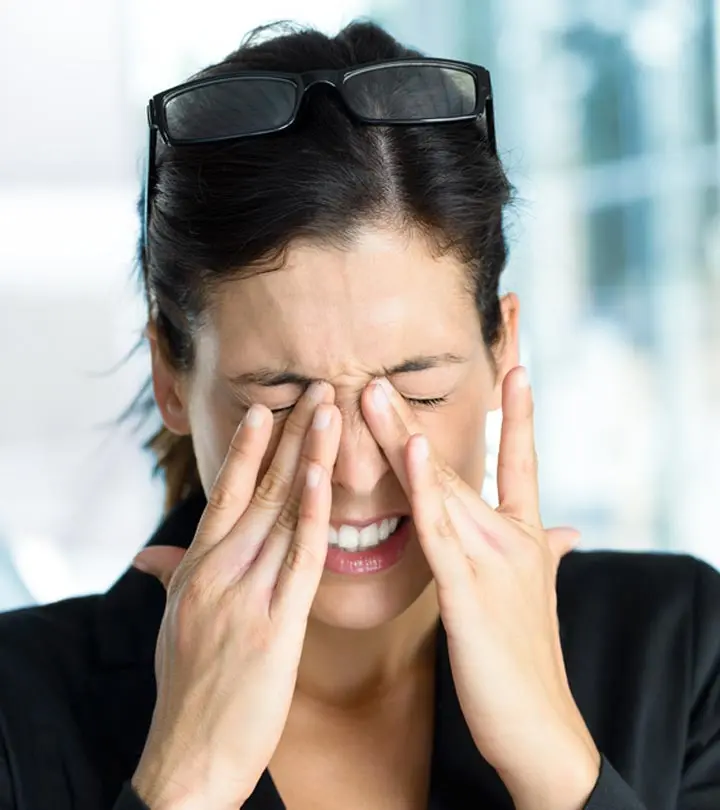
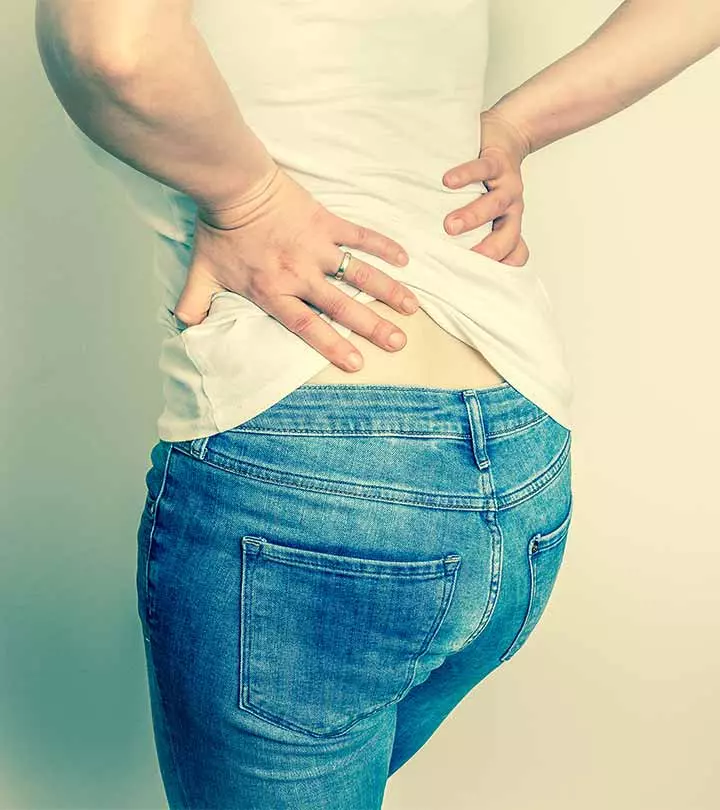





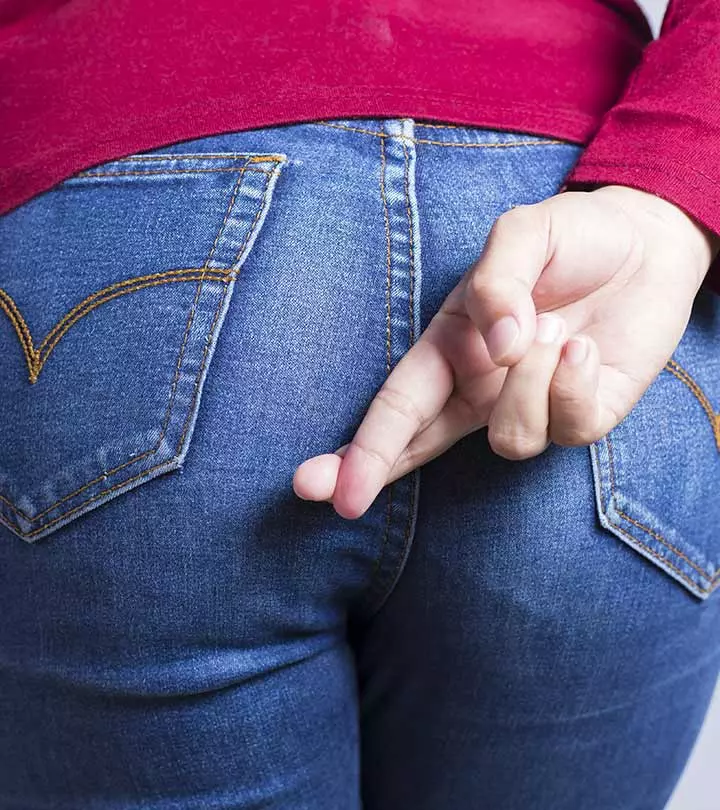
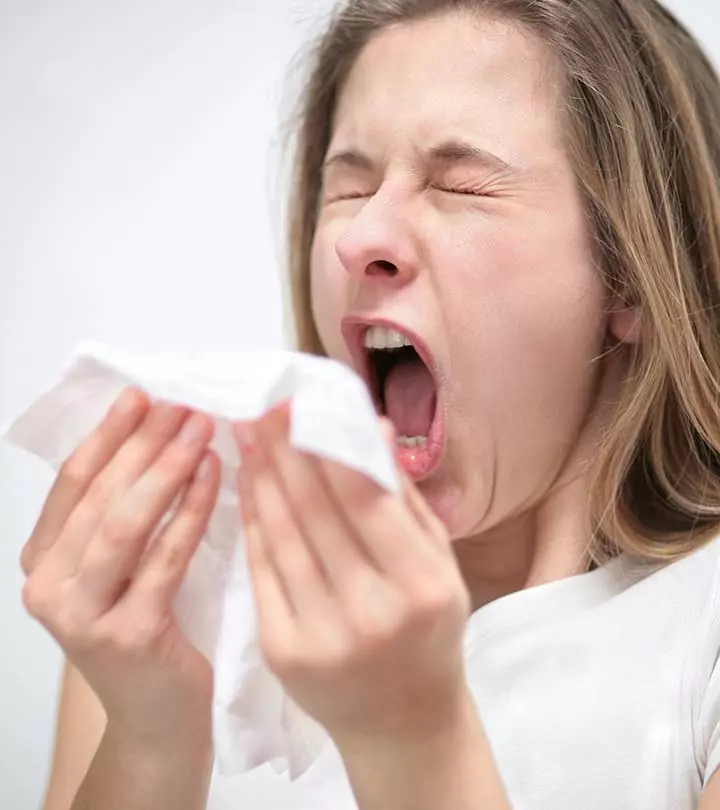
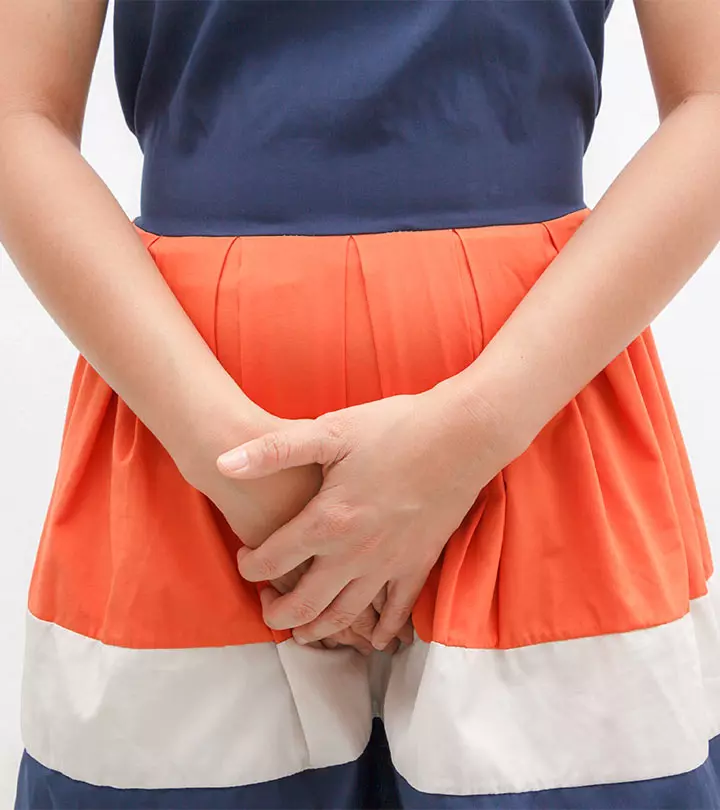

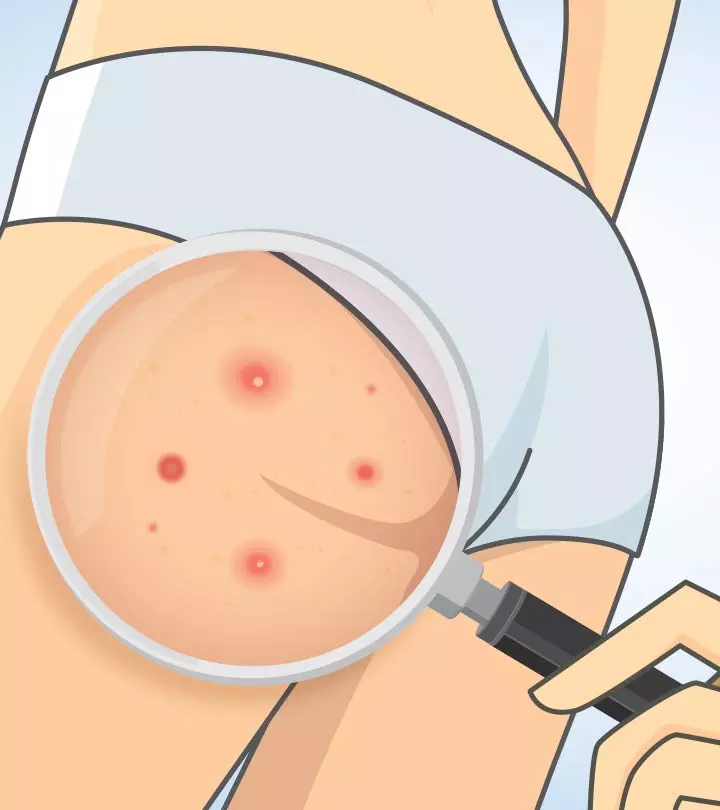
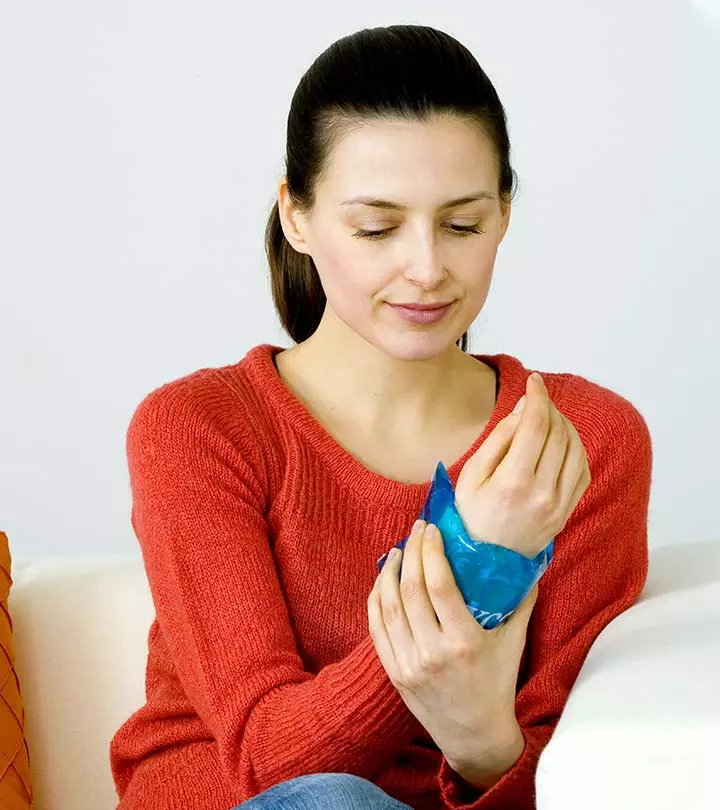


Community Experiences
Join the conversation and become a part of our empowering community! Share your stories, experiences, and insights to connect with other beauty, lifestyle, and health enthusiasts.